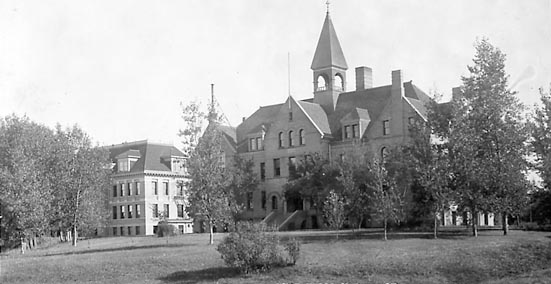The Closing of Fargo College

In June 1922, Fargo College closed its doors. The college had experienced financial problems for a number of years. Rising expenses caused by World War I and decreasing endowments continued to erode the college's financial position until it was forced to close. Student fees were not enough to keep the college alive.
The last official ceremony of the College was commencement exercises on Wednesday, June 14, 1922. The College had 25 such graduating classes for a total of 272 graduates. The class sizes ranged from three in the first year (1896), to one (in 1899 and 1901), to a high of 26 in 1916, and finally 11 in 1922. A total of 113 men and 159 women graduated from the College. The largest share of graduates (as of 1922 and not counting the final class) went into education (30%), homemaking (23%), Christian work (11%), and business (10%).
There was a continuous, but unsuccessful, by a loyal group of alumni to raise sufficient funds to reopen the college. By October 1929, they had accumulated an endowment fund of $250,000. It was also the year of the stock market crash and that event ended all hopes of reopening the college.
In 1932, the buildings were taken over by the Good Samaritan Institute which used the campus until the Institute moved to Jamestown in 1940. In 1940 the St. Benedict's parish of Horace, ND, purchased the pipe organ (built in 1888) from the closed college.
Jones Hall and Dill Hall were demolished in 1940. The library was razed in 1964 to provide expansion room for the Western State Life Insurance Company.
